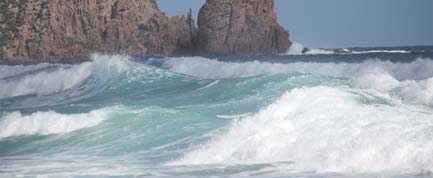Humans Behind Rising Seas, Study Says

Since 1900, global sea levels have crept upward about seven inches. Rising temperatures are melting glaciers and ice sheets, as well as warming the oceans directly, which causes them to expand. Various researchers have attributed only a portion of the rise in water level to carbon dioxide (CO2) released by human actions—and blamed the rest on natural factors such as solar activity. The latest study goes much further, faulting people for more than three-quarters of the sea-level change during the past century.
Records of tide height have been kept for centuries at several seaports (Amsterdam since 1700, Liverpool since 1768, Stockholm since 1774, and many other places since 1850). Such long records have enabled Svetlana Jevrejeva, of the British government’s Proudman Oceanographic Laboratory in Liverpool, and two colleagues to statistically model the influence of various factors on sea level during the past three centuries, and to extrapolate the findings over the past millennium.
The team found that up until about 1800, sea levels actually fell owing to volcanic eruptions that periodically injected ash into the atmosphere, veiling the Sun and cooling the Earth. But as the waters rose after 1850, the biggest contributing factor was increasing atmospheric CO2.
Significantly, Jevrejeva’s team calculated that without the ongoing, mitigating effects of volcanic activity since 1880, sea levels would now be about three inches higher than they are.
This research was published in the journal Geophysical Research Letters.
Sign up for the Live Science daily newsletter now
Get the world’s most fascinating discoveries delivered straight to your inbox.









